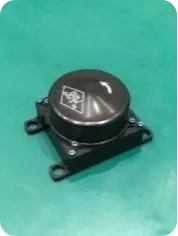
- Afrikaans
- Albanian
- Amharic
- Arabic
- Armenian
- Azerbaijani
- Basque
- Belarusian
- Bengali
- Bosnian
- Bulgarian
- Catalan
- Cebuano
- China
- Corsican
- Croatian
- Czech
- Danish
- Dutch
- English
- Esperanto
- Estonian
- Finnish
- French
- Frisian
- Galician
- Georgian
- German
- Greek
- Gujarati
- Haitian Creole
- hausa
- hawaiian
- Hebrew
- Hindi
- Miao
- Hungarian
- Icelandic
- igbo
- Indonesian
- irish
- Italian
- Japanese
- Javanese
- Kannada
- kazakh
- Khmer
- Rwandese
- Korean
- Kurdish
- Kyrgyz
- Lao
- Latin
- Latvian
- Lithuanian
- Luxembourgish
- Macedonian
- Malgashi
- Malay
- Malayalam
- Maltese
- Maori
- Marathi
- Mongolian
- Myanmar
- Nepali
- Norwegian
- Norwegian
- Occitan
- Pashto
- Persian
- Polish
- Portuguese
- Punjabi
- Romanian
- Russian
- Samoan
- Scottish Gaelic
- Serbian
- Sesotho
- Shona
- Sindhi
- Sinhala
- Slovak
- Slovenian
- Somali
- Spanish
- Sundanese
- Swahili
- Swedish
- Tagalog
- Tajik
- Tamil
- Tatar
- Telugu
- Thai
- Turkish
- Turkmen
- Ukrainian
- Urdu
- Uighur
- Uzbek
- Vietnamese
- Welsh
- Bantu
- Yiddish
- Yoruba
- Zulu
Flywheel
Products Detail

|
Product code |
CG-DJ-FW-3mN·m |
CG-DJ-FW-1.4mN·m |
CG-DJ-FW-15mN·m |
CG-DJ-FW-150mN·m |
|
Envelope Size |
139mm × 100 mm × 73.5 mm |
Single wheel body:≤71 mm × 71 mm × 40 mm Control board ≤94 mm × 94 mm × 15 mm |
113 mm × 152 mm × 74 mm |
Φ 252 mm × 125 mm |
|
Weight |
0.83kg |
Single wheel ≤160g Control board ≤110g |
≤1.29kg |
9±0.3kg |
|
Power consumption
(Three Flywheels) |
Steady state ≤1.8W(@2000rpm)
Peak ≤7W(@5000rpm/3mNm) |
Standby power consumption ≤1.2W
Steady state power consumption ≤3.5W(@3000rmp)
Peak power consumption ≤13.2W |
Standby power consumption ≤1.8W;
Steady state power consumption ≤4.1W(@3000rmp)
Peak power consumption ≤23W |
≤5W(@1000rpm) ≤75W |
|
Working voltage |
12±1V |
9V-12.5V |
12V±1.2V |
30V±3V |
|
Communication interface |
RS422 |
CAN |
RS422 |
RS422 |
|
Angular momentum |
≥0.1Nms(@±6000rpm) |
≥ 50mNms(@9000rpm) |
≥ 0.5Nms(@6000rpm) |
15Nms(@3100rpm) |
|
Output Torque |
≥3mNm (0~±6000rpm) |
≥1.4mNm(0~±6000rpm) |
≥15mNm(0~±5000rpm) |
0.15Nm |
|
Working Modes |
Standby Mode, Speed Mode |
Standby Mode, Speed Mode |
Speed Mode, Current Mode, Standby Mode |
Speed Mode, Current Mode, Standby Mode |
|
Precision |
≤±1rpm |
≤±1rpm |
≤±0.2 rpm (Over 500rpm) ≤±1rpm(500rpm~100rpm) ≤±5rpm (Below 100rpm) |
\ |
|
Supply Cycle |
3 months |
3 months |
3 months |
3 months |
The Flywheel is a mechanical device used in spacecraft and satellite attitude control systems to store and release angular momentum, providing precise control of the spacecraft's orientation. The flywheel operates by spinning at high speeds to store rotational energy. When a change in the spacecraft's orientation is required, the flywheel's rotation is adjusted, either by accelerating or decelerating the flywheel, to produce a torque that alters the spacecraft's attitude. The system is composed of a high-inertia wheel mounted on a bearing and driven by an electric motor. Flywheels are particularly advantageous in spacecraft applications because they offer precise momentum control without relying on consumable fuel. The system is typically maintenance-free, has no moving fluids, and is highly reliable. Flywheels are commonly used in geostationary satellites, scientific missions, and deep space exploration where long-term attitude control is required. Their ability to function without propellant makes them a cost-effective solution for spacecraft that need to maintain their orientation over extended periods without the complexity of traditional reaction control systems.
















